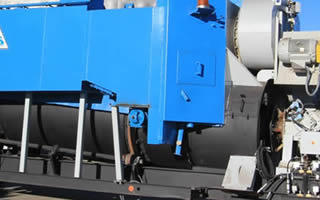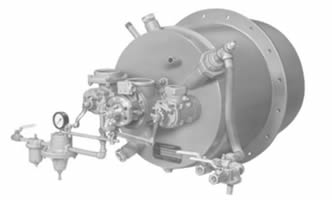Soil remediation is the removal of pollution or contaminants from soil. In many cases the main constituents of the contaminates is petroleum hydrocarbons from oil spills, displaced earth from drilling operations, or other remnants from drilling equipment.
\r\nThis unit is design to clean soil contaminants with petroleum hydrocarbon. It thermally dissolves or evaporates petroleum contaminants and completely oxidizes them with the aid of the after burner.
\r\nThis advanced technology allows the SR unit to adapt to small or large projects of various degrees of complexities of waste type in different types of weather. This include treatment of contaminated soil and allow soil to be re-used. That is why the SR unit is one of the best Technology in recent times.
\r\n| 1. Feed and Discharge | \r\n|
| \r\n
| \r\n  Discharge auger utilize misting sprays to simultaneously cool the product to a manageable temperature and reduce dusting. | \r\n
\r\n
| 2. Burners | \r\n|
 Hauck Starjet 25 MMBTU/Hr burner fires fuel oil, capable of firing natural gas and propane. | \r\n\r\n Hauck Wide Range 22 MMBTU/Hr burner fires fuel oils. Capable of firing natural gas and propane. \r\n | \r\n
\r\n
| \r\n 3. Rotary Thermal Desorber \r\n | \r\n|
\r\n
| \r\n  | \r\n
\r\n
| 4. Vapor Treatment | \r\n|
| \r\n
Hot vapor discharging from the oxidizer traverses onward into the wet scrubber where 4 rows of high pressure spray nozzles simultaneously cool the gas and further reduce dusting. Collected liquid is discharged with a sump pump. \r\nNon-condensables continue to the exhaust stack. \r\n | \r\n



 Volatized hydrocarbons and entrained dust past through a dust duct. This baffled duct collects particulate matter before entering the thermal oxidizer. An afterburner destroys the vaporized hydrocarbons to CO, CO2, and water.
Volatized hydrocarbons and entrained dust past through a dust duct. This baffled duct collects particulate matter before entering the thermal oxidizer. An afterburner destroys the vaporized hydrocarbons to CO, CO2, and water.